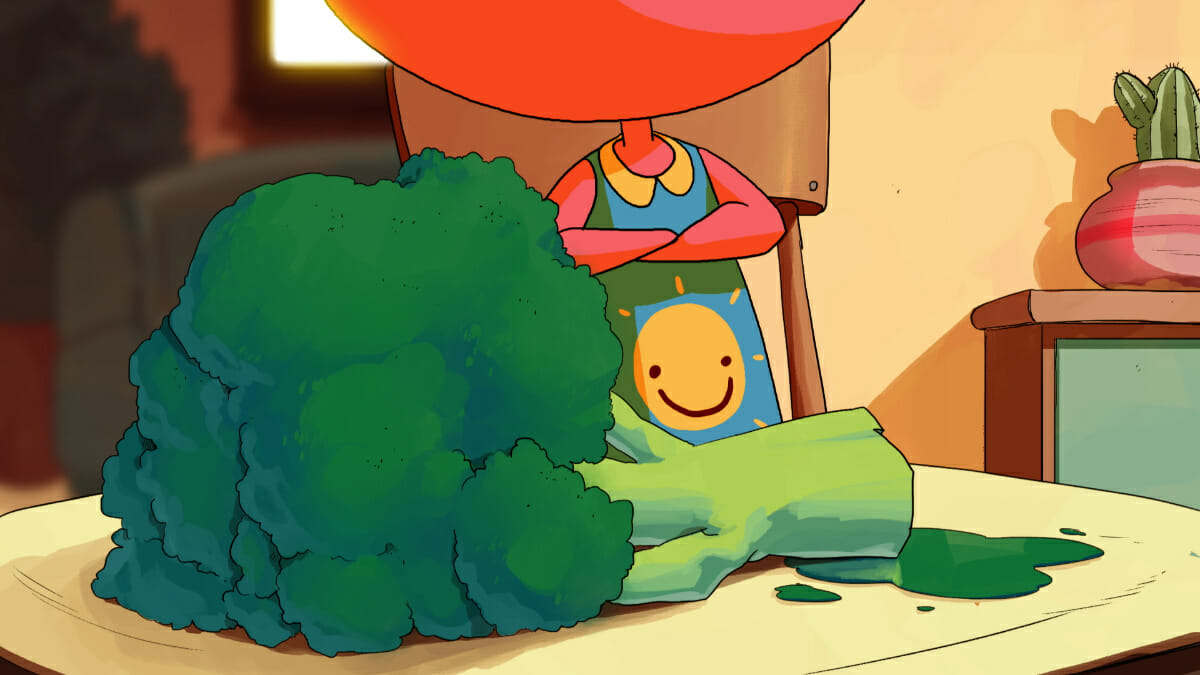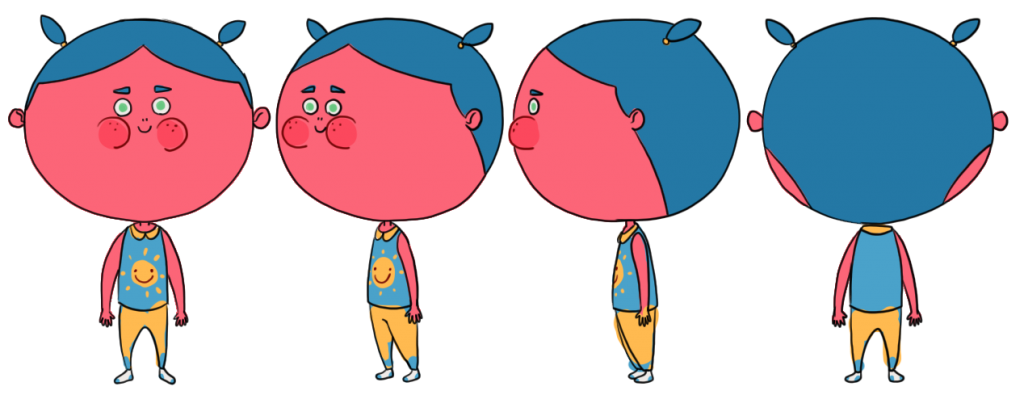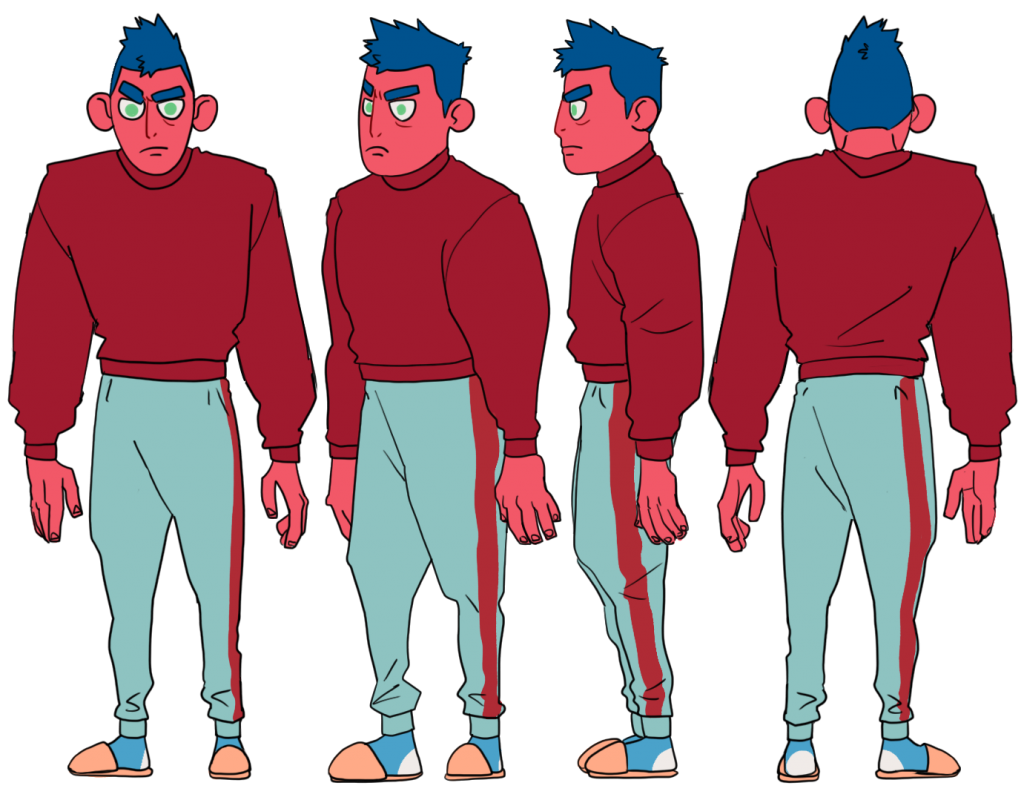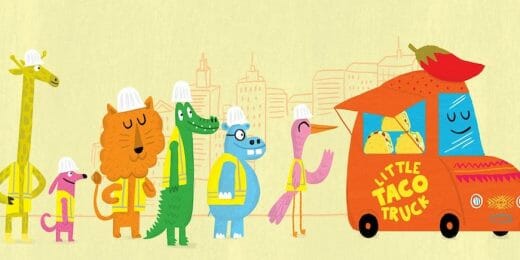
Being told to eat our greens is an experience we all grew up with, but for Chiara Sgatti this love-hate relationship lasted into adulthood. Her animated short, GREENS, part of Rumpus Animation’s series of idents, explores the struggles of getting enough vegetables into one’s diet. In the short, Chiara gives her meal-time dilemma the full action treatment, turning dinnertime into a dicey, death-defying dance worthy of a scene in a fight flick.
There are a number of interesting techniques employed by Chiara on the short film, which we discuss with her throughout this interview. Creating the short with traditional digital animation in Toon Boom Harmony, Chiara pulls off a range of impressive feats including hand drawn zooms and pans. Plus a hands-on approach to sound design!
Read on to digest the process behind Chiara’s character design and how she brought her beautifully bratty protagonist to life. You can catch GREENS below and enjoy our full interview with Chiara Sgatti.
We enjoyed your great ident, GREENS! Please introduce the short film and what it means to you.
Chiara: GREENS is the never-ending struggle of veggies feeding. I really wanted to have this short built up from crazy action-like scenes; sparked by something so trivial as eating the last broccoli on the plate.
What does GREENS take inspiration from?
Chiara: GREENS started as an inner joke with me and my girlfriend over her refusal to eat vegetables. I thought that having two adults fight over such a thing would look a bit confusing, especially for such a tiny short. So I went for the more archetypal duo, father and daughter.

What was your approach to character design?
Chiara: I wanted to give them both a distinctive look that also reflected their character. The child’s roundness and full cheeks suggest cuteness, but her eyes are mainly evil. The dad has a long, eye-bagged face; his squared shoulders, before a sign of strength, are now falling down, defeated.
How would you describe the colour palette you used in GREENS?
Chiara: I wanted to go for an overall warm and cozy light. Just so that the initial mood would clash with the later full on fight scene. The characters also have exaggerated colours, to make them less human and more cartoonish.
How did you achieve the cool spinning effect in the fork-throwing scene?
Chiara: I imagined as if the fork was actually a soft plate, spinning and bending. Also, a clear cut from spinning to hitting the wall worked best, to give the idea of the sheer force behind the throw. I then added hand drawn blur effects and some light.

How did you create the fantastic, action-movie inspired cutting scene with the knife and plate?
Chiara: I started by rotating the table and adding the child in place. I then animated the kid slashing invisible broccoli and finally I added the broccoli. The last bit where she is screaming, now my favourite part, wasn’t meant to be there.
I need to thank Joe [Wood, creative director at Rumpus] for the idea of having the last broccoli hit the wall behind the dad!
What other tools or techniques did you employ in Harmony that helped you bring GREENS to life?
Chiara: Everything is cel animation. I just drew everything, zoom-ins and outs included. No cameras. I like to compartmentalize when it comes to putting together animation, background and cameras, so I use different software for each. I used Toon Boom Harmony for the hand drawn animation, using the timeline, the brush tool and onion skin.
I drew all the camera movements beforehand (even the zoom in and zoom out), to help later on in comp. And I used nodes to preview some effects, like outer glows and blurs.

You mentioned some interesting sound design techniques, can you talk about how you created them and incorporated them into your animation?
Chiara: It’s too bad I never filmed myself squashing bananas for the sound design draft!
About the sound design: I started by writing down some notes on a storyboard, to guide the sound designer, James Keeble. Then I thought, surely the sound designer would better understand what I mean if I record some things? One thing led to another, and I ended up using a whole day to play the animation on repeat while throwing forks on knives, stabbing wood chopping boards, screaming and, my absolute favourite, smashing ripe bananas.
The bananas had to sound like broccoli EXPLODING from the sheer force of the kid cutting through them, so I smashed them with a fork, with my hands, with my teeth, with other fruits. I had so much potassium that day. Then I edited it all together in Premiere Pro. I am not sure how much of my sound design ended up in the final edit — surely the kid’s scream, I imagine — but it was worth it nevertheless.

Tell us about a day in the life as an animator at Rumpus Animation…
Chiara: Rumpus is such a chill place, and their projects are always so fun and neat looking! They were the ones teaching me to use Toon Boom Harmony in the first place
What advice do you have for fellow animators looking to execute a short film concept?
Chiara: Cut things out if you can! It won’t just save time. Sometimes things are just redundant and won’t help the story.
Any interesting future projects coming up that you can share?
Chiara: I am currently trying to write a comic, since I figured it would be pretty close to animation. I am not so sure! It’s mainly a fun project to entertain myself and to unwind a little bit.

- Want to see more of the Rumpus Idents? Be sure to visit Rumpus Animation’s website to watch the full series.
- Interested in using Harmony for your next animated project? Artists can try our software free during the 21-day trial, with no credit card required.



